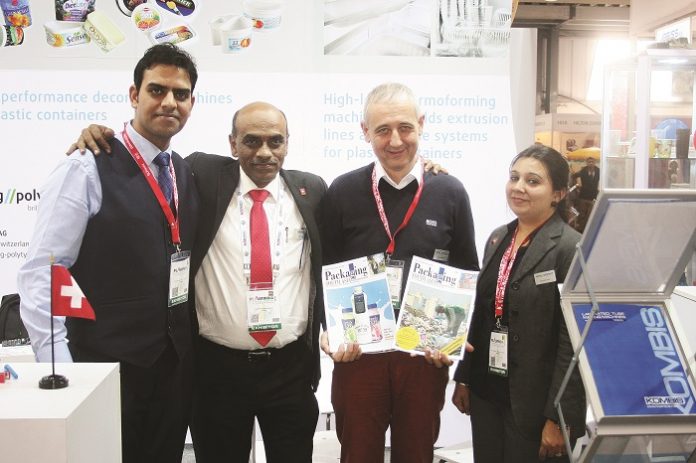
Wifag-Polytype promoted its cup printing and laminated tubes making machine at Plastindia 2015, which was held at Gandhinagar in Gujarat. “Here the major focus is on cups and laminated tubes. Also on display are metal packaging application solutions but our major aim at this particular event is to talk more about solutions for cup decoration, lamination and plastic tube making,” said Arvind Narang, vice president, head of equipment sales, Wifag-Polytype India.
According to Narang the primary agenda for the company at Plastindia 2015 was to find new companies particularly from South India. “Being based in North India our exposure to potential customers in South India is limited. We are fairly wellknown in West India. Penetrating the Southern Indian market is going to be our focus and we hope to utilize this event as a platform,” Narang added.
As for cup printing applications, Wifag-Polytype has the BDM 681/682 for round cups. This high performance six to eight cup printing system has a basic printing unit and transfer section made of robust steel construction. The pre-treatment and UV-Mandrel curing are integrated in the basic machine concept. The newly designed cup in-feed and discharge automation round off the system. The main characteristics of the BDM 681/682 printing technology are – very high efficiency, good print quality, short change-over time as well as excellent accessibility and ergonomics. This machine handles cups with minimum cup height of 35 mm to maximum height of 200 mm. In terms of diameter it handles cups with a range from 60 mm to 185 mm. The maximum print speed is 600 cups an hour.
Moreover, from the company’s portfolio the BDM 482 machine handles cups with minimum height of 35 mm to maximum height of 160 mm. It terms of diameter it handles cups with a range from 60 mm to 160 mm. Maximum print speed is 27,000 cups an hour. Present at the company stand was Miroslav Hinkov, general manager of Mechatronica of Bulgaria. Last year, Polytype and Mechatronica entered into a close partnership to mutually develop and market packaging machinery for the oral care, cosmetics and beverages market. For this purpose Polytype acquired 49% of Mechatronica’s shares. From the Mechatronica portfolio, the machine being promoted at Plastindia was the lamination tube making machine – Kombis TMM8003. The capacity of this machine is 80 tubes a minute. The modular construction of this production line allows easy adjustment and maintenance.
According to Hinkov, the Indian market for cosmetics and oral care segments has a huge potential driven by rising income and growing population. “Mechatronica has been present in India for a long time and we see great potential for the lamination tube making machine going forward,”Hinkov said. Talking about the response received at Plastindia, Narang said that despite the shift of venue from Delhi to Gandhinagar, footfall has been satisfactory with quality conscious customers visiting the stand.










